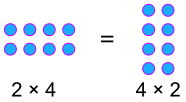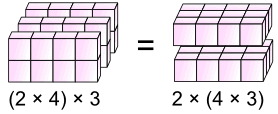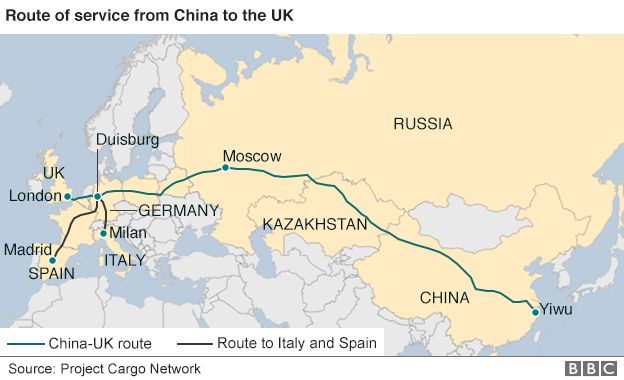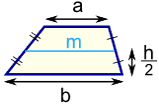Originally from China, green tea is a lightly caffeinated beverage with a wide array of medicinal properties.
Green tea is rich in antioxidants and polyphenolic compounds which have strong anti-inflammatory effects. One of the most prevalent antioxidants in green tea is the catechin epigallocatechin gallate, or EGCG.
EGCG is likely what gives green tea its apparent ability to protect against chronic diseases including heart disease, diabetes and cancer (7, 8).
Research also indicates that the combination of catechins and caffeine in green tea may make it an effective tool for weight loss in some people (9).
Summary
Green tea is antioxidant-rich with many health benefits including possible cancer prevention.
4. Eggs
Eggs have historically been a controversial topic in the nutrition world due to their high cholesterol content, but they remain one of the healthiest foods.
Whole eggs are rich in many nutrients including B vitamins, choline, selenium, vitamin A, iron and phosphorus.
They’re also loaded with high-quality protein.
Eggs contain two potent antioxidants, zeaxanthin and lutein, which are known to protect vision and eye health (10, 11).
Despite fears surrounding egg consumption and high cholesterol, research indicates no measurable increase in heart disease or diabetes risk from eating up to 6–12 eggs per week (12).
In fact, eating eggs could increase “good” HDL cholesterol in some people, which may lead to a favorable reduction in heart disease risk. More research is needed to draw a definite conclusion (13).
Summary
Eggs are rich in high-quality protein and unique antioxidants. Research indicates that eating eggs regularly will not increase your risk of heart disease or diabetes.
5. Legumes
Legumes, or pulses, are a class of plant foods made up of beans (including soy), lentils, peas, peanuts and alfalfa.
They earn the superfood label because they’re loaded with nutrients and play a role in preventing and managing various diseases.
Legumes are a rich source of B vitamins, various minerals, protein and fiber.
Research indicates that they offer many health benefits including improved type 2 diabetes management, as well as reduced blood pressure and cholesterol (14).
Eating beans and legumes regularly may also promote healthy weight maintenance, due to their ability to improve feelings of fullness (15).
Summary
Legumes are rich in many vitamins, protein and fiber. They may prevent some chronic diseases and support weight loss.
6. Nuts and Seeds
Nuts and seeds are rich in fiber, vegetarian protein and heart-healthy fats.
They also pack various plant compounds with anti-inflammatory and antioxidant properties, which can protect against oxidative stress (16).
Research indicates that eating nuts and seeds can have a protective effect against heart disease (17).
Common nuts and seeds include:
- Almonds, pecans, pistachios, walnuts, cashews, Brazil nuts, macadamia nuts.
- Peanuts — technically a legume, but often considered a nut.
- Sunflower seeds, pumpkin seeds, chia seeds, flaxseeds, hemp seeds.
Interestingly, even though nuts and seeds are calorically dense, some types of nuts are linked to weight loss when included in a balanced diet (18, 19, 20).
Summary
Nuts and seeds are full of fiber and heart-healthy fats. They may reduce your risk of heart disease and support weight loss.
7. Kefir (And Yogurt)
Kefir is a fermented beverage usually made from milk that contains protein, calcium, B vitamins, potassium and probiotics.
Kefir is similar to yogurt but has a thinner consistency and typically more probiotic strains than yogurt.
Fermented, probiotic-rich foods like kefir have several associated health benefits, including reduced cholesterol, lowered blood pressure, improved digestion and anti-inflammatory effects (21, 22, 23).
Though kefir is traditionally made from cow’s milk, it’s typically well tolerated by people with lactose intolerance due to the fermentation of the lactose by bacteria.
However, it’s also made from non-dairy beverages such as coconut milk, rice milk and coconut water.
Summary
Kefir is a fermented dairy beverage with multiple health benefits related to its probiotic content. Though generally made from cow’s milk, kefir is also available in non-dairy forms.
You can purchase kefir or make it yourself. If you’re choosing a commercially prepared product, be mindful of added sugar.
8. Garlic
Garlic is a plant food that is closely related to onions, leeks and shallots. It’s a good source of manganese, vitamin C, vitamin B6, selenium and fiber.
Garlic is a popular culinary ingredient due to its distinct flavor, but it has also been used for its medicinal benefits for centuries.
Research indicates that garlic may be effective in reducing cholesterol and blood pressure, as well as supporting immune function (24).
What’s more, sulfur-containing compounds in garlic may even play a role in preventing certain types of cancer (25).
Summary
Garlic is a nutrient-rich food used for its medicinal benefits for centuries. It may be useful for supporting immune function and reducing your risk of heart disease and certain cancers.
9. Olive Oil
Olive oil is a natural oil extracted from the fruit of olive trees and one of the mainstays of the Mediterranean diet.
It’s biggest claims to health are its high levels of monounsaturated fatty acids (MUFAs) and polyphenolic compounds.
Adding olive oil to your diet may reduce inflammation and your risk of certain illnesses such as heart disease and diabetes (26, 27, 28).
Summary
Olive oil is one of the principle fat sources in the Mediterranean diet. It may be beneficial in reducing heart disease, diabetes and other inflammatory conditions
It also contains antioxidants such as vitamins E and K, which can protect against cellular damage from oxidative stress.
10. Ginger
Ginger comes from the root of a flowering plant from China. It’s used as both a culinary flavor enhancer and for its multiple medicinal effects.
Ginger root contains antioxidants, such as gingerol, that may be responsible for many of the reported health benefits associated with this food.
Ginger may be effective for managing nausea and reducing pain from acute and chronic inflammatory conditions (29, 30, 31).
It may also reduce your risk of chronic illnesses such as heart disease, dementia and certain cancers (32, 33, 34).
Summary
Ginger is available fresh, as an oil or juice and in dried/powdered forms. It’s easy to incorporate into soups, stir-fries, sauces and teas.
Ginger is used for its flavor and potential medicinal effects. It may be useful in treating nausea, pain and preventing certain chronic diseases.
11. Turmeric (Curcumin)
Turmeric is a bright yellow spice that is closely related to ginger. Originally from India, it’s used for cooking and its medicinal benefits.
Curcumin is the active compound in turmeric. It has potent antioxidant and anti-inflammatory effects and is the focus of most research surrounding turmeric.
Studies show that curcumin may be effective in treating and preventing chronic diseases such as cancer, heart disease and diabetes (35, 36).
It may also aid wound healing and pain reduction (37, 38).
One drawback of using curcumin medicinally is that it’s not easily absorbed by your body, but its absorption can be enhanced by pairing it with fats or other spices such as black pepper.
Summary
The active compound in turmeric, curcumin, is associated with several medicinal effects. Curcumin is not easily absorbed and should be paired with substances that enhance its absorption, such as black pepper.
12. Salmon
Salmon is a highly nutritious fish packed with healthy fats, protein, B vitamins, potassium and selenium.
It’s one of the best sources of omega-3 fatty acids, which are known for a variety of health benefits, such as reducing inflammation (39).
Including salmon in your diet may also lower your risk of heart disease and diabetes and help you maintain a healthy weight (40).
A potential drawback of eating salmon and other types of seafood is their possible contamination with heavy metals and other environmental pollutants.
You can avoid potential negative effects by limiting your consumption of fish to two to three servings per week (41).
Summary
Salmon is a good source of many nutrients, especially omega-3 fatty acids. Limit your consumption of salmon to avoid potential negative effects from contaminants common in fish and seafood.
13. Avocado
Avocado is a highly nutritious fruit, though it’s often treated more like a vegetable in culinary applications.
It’s rich in many nutrients, including fiber, vitamins, minerals and healthy fats (42).
Similar to olive oil, avocado is high in monounsaturated fats (MUFAs). Oleic acid is the most predominant MUFA in avocado, which is linked to reduced inflammation in the body (43).
Eating avocado may reduce your risk of heart disease, diabetes, metabolic syndrome and certain types of cancer (44, 45, 46).
Summary
Avocados are nutrient-rich, high-fiber fruits that may play a role in reducing inflammation and chronic diseases.
14. Sweet Potato
The sweet potato is a root vegetable loaded with many nutrients, including potassium, fiber and vitamins A and C.
They’re also a good source of carotenoids, a type of antioxidant that may reduce your risk of certain types of cancer (47).
Despite their sweet flavor, sweet potatoes don’t increase blood sugar as much as you might expect. Interestingly, they may actually improve blood sugar control in those with type 2 diabetes (48).
Summary
Sweet potatoes are a highly nutritious food loaded with carotenoids, which have strong antioxidant properties. They may also be beneficial for blood sugar control.
15. Mushrooms
Some of the most common varieties of edible mushrooms are button, portobello, shiitake, crimini and oyster mushrooms.
Though nutrient content varies depending on the type, mushrooms contain vitamin A, potassium, fiber, and several antioxidants not present in most other foods (49).
Interestingly, eating more mushrooms is associated with greater consumption of vegetables in general, contributing to an overall more nutritious diet (50).
Due to their unique antioxidant content, mushrooms may also play a role in reducing inflammation and preventing certain types of cancers (49, 50, 51).
Another super feature of mushrooms is that agricultural waste products are used to grow them. This makes mushrooms a sustainable component of a healthy food system (50).
Summary
Mushrooms are full of nutrients and may reduce your risk of certain diseases. Additionally, mushrooms are a sustainable food choice.
16. Seaweed
Seaweed is a term used to describe certain nutrient-rich sea vegetables. It’s most commonly consumed in Asian cuisine but is gaining popularity in other parts of the world due to its nutritional value.
Seaweed packs multiple nutrients, including vitamin K, folate, iodine and fiber.
These ocean vegetables are a source of unique bioactive compounds — not typically present in land-vegetables — which may have antioxidant effects.
Some of these compounds may also reduce your risk of cancer, heart disease, obesity and diabetes (52).
Summary
Seaweed is a group of highly nutritious sea vegetables that may play a role in protecting against certain chronic diseases.



 Why "commutative" ... ?
Because the numbers can travel back and forth like a commuter.
Why "commutative" ... ?
Because the numbers can travel back and forth like a commuter.

 ... or when we multiply:
(a × b) × c = a × (b × c)
... or when we multiply:
(a × b) × c = a × (b × c)

 3 lots of (2+4) is the same as 3 lots of 2 plus 3 lots of 4
So, the 3× can be "distributed" across the 2+4, into 3×2 and 3×4
And we write it like this:
a × (b + c) = a × b + a × c
Try the calculations yourself:
3 lots of (2+4) is the same as 3 lots of 2 plus 3 lots of 4
So, the 3× can be "distributed" across the 2+4, into 3×2 and 3×4
And we write it like this:
a × (b + c) = a × b + a × c
Try the calculations yourself:


























